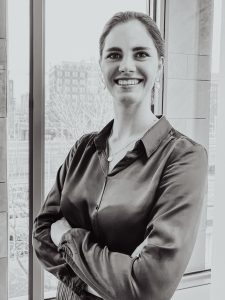AI as the inventor in a patent? No.
When applying for a patent for an invention, the inventor must be designated. Traditionally, the only inventor was a natural person and thus it was a no-brainer to designate such natural person as the inventor. However, with the progression of artificial intelligence (“AI”) and AI becoming more and more an essential tool in invention development, the question started to arise whether or not AI can be listed as the inventor. On the answer to this question the United Kingdom leaves no doubt – it’s a big, fat NO.
The deciding case – Background
In a recent UK case of Thaler v Comptroller, the focus was on two patent applications. The applicant thereof, Dr Stephen Thaler (“Thaler”), designated his AI machine called DABUS, as the autonomous inventor of the patented inventions. The patented inventions were, respectively, a food container and a warning light. Since the applicant was not the same as the inventor, Thaler had to indicate how he acquired the rights from DABUS to apply for the patent applications. To this he stated that by ownership of the machine he acquired the rights to the inventions.
Decision
In a first instance the patent applications were rejected based on two reasons. Firstly, AI cannot be regarded as a natural person as required in terms of the Patents Act. Secondly, mere ownership of a machine is not sufficient to acquire ownership of creations of the machine. Based on these reasons the patent applications have been deemed to be withdrawn.
Clearly not happy with this, Thaler appealed and eventually reached the Supreme Court. Here, the Supreme Court held that AI cannot be an inventor in a patent application. This decision follows in the footsteps of decisions of the European, US and Australian courts in corresponding cases of Thaler.
Reason for decision
In arriving to this decision, the Court considered three questions, namely:
- What is the scope and meaning of the term “inventor” as provided in the Patents Act?
- Was Thaler in fact the owner of any invention made by DABUS and thus entitled to apply for a patent in respect of it?
- Was it correct to hold that the applications should be withdrawn?
On the first question the Court held that in terms of the Act an inventor has to be a natural person. Thus, in absence of DABUS’s human nature DABUS could not be designated as inventor of the inventions described in the patent applications.
On the second question the Court held that the mere fact that Thaler is the owner of DABUS, does not entitle him to ownership of its creations. Therefore, Thaler was not the owner of the invention and, accordingly, had no right to apply for the patent applications.
On the third question, the Court held that the patent applications did not satisfy the formal requirements for a patent application since, for the reasoning above, no inventor or entitled applicant have been designated. Thus, the Court confirmed that it was indeed correct to withdraw the patent applications.
Effect of decision on research and development organizations
This decision will have a major effect on industries who heavily depend on patent applications, such as life sciences and pharmaceuticals. This decision confirms that inventions which were autonomously created with AI will not be entitled to patent protection, which possibly deprive these industries from substantial income. Accordingly, these industries will be forced to re-assess their approaches to integration of AI into their research and development phases.
In such re-assessment strategic measures must be implemented to ensure that AI will never be the autonomous inventor of any invention. To achieve this, human involvement alongside AI must be maintained throughout the development process of the invention. Collaboration between human inventors and AI technologies is crucial in order to designate a natural person as the inventor. Consequently, industries will be eligible to file patent applications for inventions where AI was used during the development thereof.
